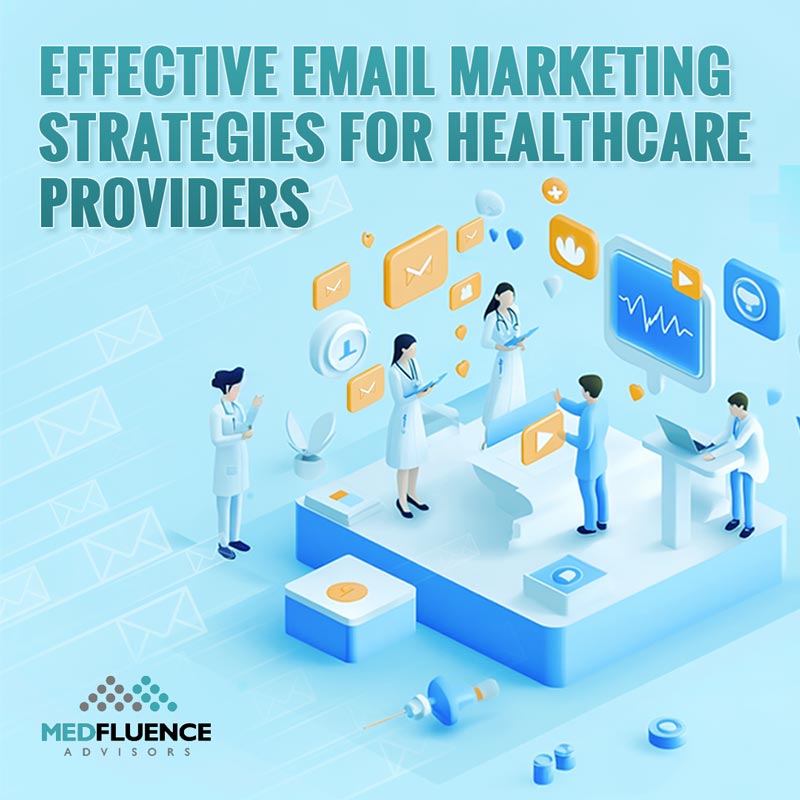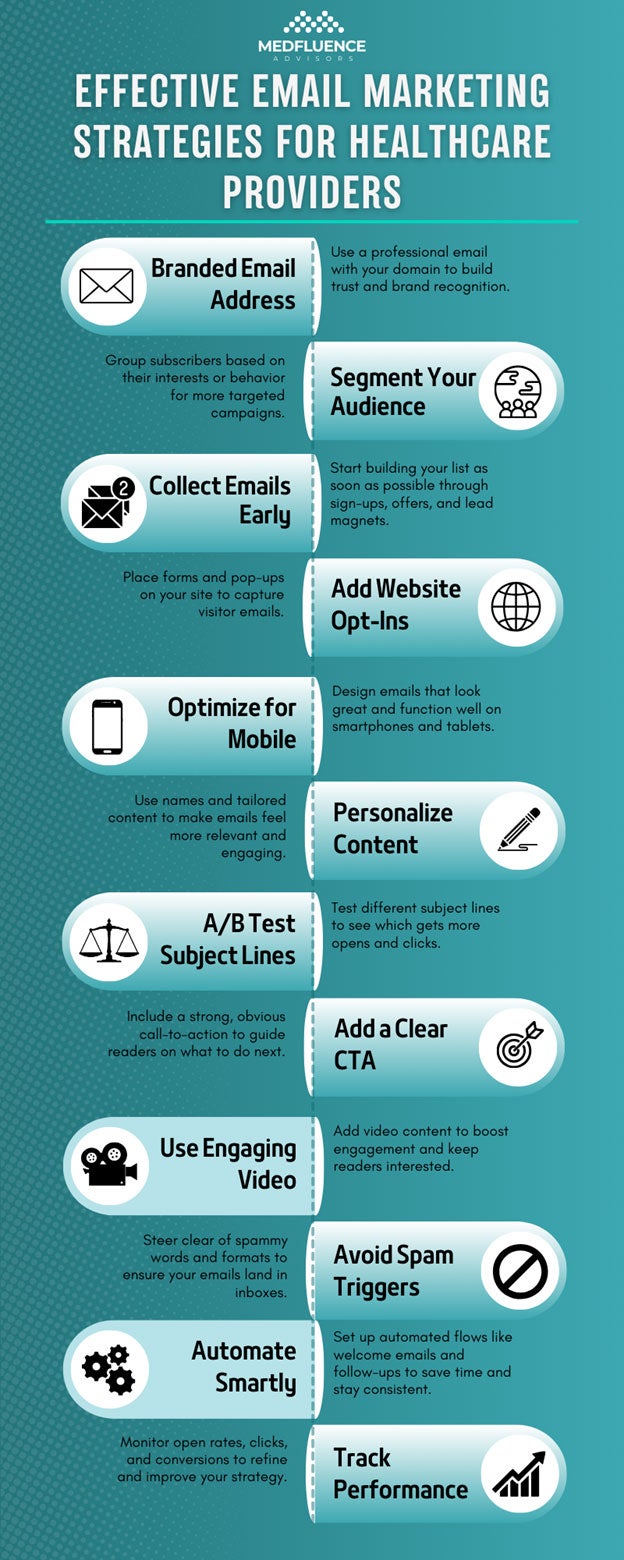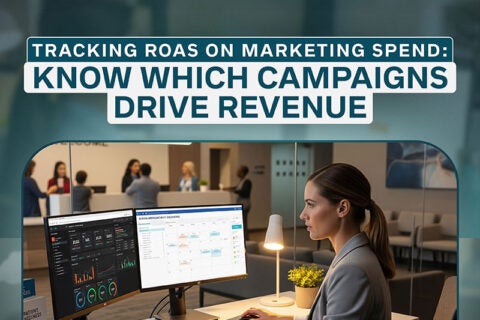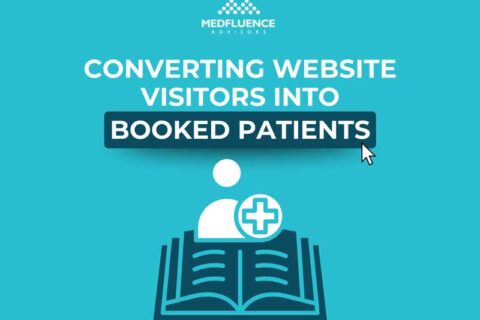Effective Email Marketing Strategies for Healthcare Providers

Healthcare is more than just providing medical services — it’s about building trust, fostering relationships, and communicating effectively. These elements are key to growing a successful medical practice.
Email marketing offers healthcare professionals a powerful way to connect with patients, share valuable information, and strengthen long-term relationships. It allows providers to communicate directly with their audience, delivering helpful health content straight to their inboxes. This builds trust and positions your practice as a knowledgeable and caring community resource.
However, email marketing in the healthcare sector is unlike any other industry. Healthcare professionals, marketers, and practice owners must navigate HIPAA regulations, protect patient privacy, and communicate about often sensitive health issues with care.
When done right — and in full compliance with laws and regulations — email marketing becomes a strategic tool to engage your audience and ensure your practice is top of mind when care is needed.
What Is Email Marketing?
Email marketing is a digital marketing strategy that uses emails to promote a certain product, service, or company. Emails sent straight to people’s inboxes can help brands and businesses build relationships with their audience, including current and potential customers. When done right, it can boost sales, increase conversions, and support business growth.
In terms of healthcare, email marketing allows medical practices to reach their audience and establish strong connections with new, current, and potential patients. Email marketing is about crafting messages that resonate and are relevant to each individual receiving the email.
Email marketing is a cost-effective and efficient way to stay connected in today’s fast-paced and saturated healthcare landscape. It’s a unique channel that allows your practice to maintain ongoing communication with an audience that actively wants to hear from you. By delivering relevant, timely content, email marketing helps strengthen the patient-provider relationship, fostering trust, loyalty, and long-term credibility.
Why Healthcare Providers Need Email Marketing
In an increasingly competitive and saturated landscape, email marketing efforts are not to be overlooked. Healthcare-related emails have an average open rate of 41.23%, and the right strategies provide opportunities for growth and success. Here are important reasons why your practice should start embracing email marketing:
Foster a more personal communication and a deeper relationship
Emails go straight to your audience’s inbox and provide an efficient way to build a deeper and more personal relationship. Emails are highly customizable and can be personalized for all your patients and potential patients allowing medical practitioners to create personalized content and messaging that resonates with their target audience.
Enhance the patient experience
Emails enhance the overall patient experience by supporting every stage of the patient journey—from initial awareness to post-care follow-up. This personal form of communication can be used to schedule appointments, send reminders, share relevant community events, and deliver personalized healthcare content. These touchpoints not only improve the patient experience but also help keep your practice top-of-mind for their ongoing healthcare needs.
Improve patient engagement
A well-crafted email marketing strategy will capture your audience’s attention and encourage them to take action–whether that’s scheduling an appointment or clicking on a healthcare resource within the email. This increases patient engagement and will help boost conversions.
Increase brand awareness
Email marketing increases awareness about your practice. When done right, you can put your practice in front of the right audience and capture the interest of potential patients. It can also be utilized to promote special offers or new services to your existing patient base.
Strengthen patient trust and loyalty
Consistently sending personalized messages helps build patient trust and loyalty. When you share valuable healthcare insights and resources, you empower patients to take charge of their health. Including relevant local community information further positions your practice as a trusted source and a respected leader in your area.
Increase automation and efficiency
Email marketing is an opportunity to automate patient communication. The right email marketing tools can automate appointment scheduling, reminders, and so much more without losing the personalized touch. Automation will increase efficiency and will give you and your medical staff more time to spend on more important aspects of the job, like patient care.
Humanize your practice
Email marketing provides opportunities for personalization, and this will help humanize your practice, even in the digital realm. Consistently connect with your audience via emails and use them to send regular newsletters, important healthcare guidelines, and personalized and relevant content so they think about your practice when the need for medical services arises.
Increase ROI
Email marketing is cost-effective and greatly increases ROI (return on investment). This is a great choice for medical practices looking to reach a wider audience without too high an advertising cost.

Effective Email Marketing Strategies: The Best Practices for Healthcare Providers
If you’re ready to dive into email marketing to help your practice grow, here’s a simple guide on how you can get started:
1. Use a professional email address
Before you start sending out emails, make sure you have a professional email address. This will give your practice a sense of authority, and people are more likely to open and engage with the content of your emails. The associated domain of your email should be related to your practice and the focus of your medical services. Additionally, professional domains are less likely to be caught by spam filters, ensuring that they reach the target audience.
2. Identify and segment your audience
Identifying who your audience is is key to reaping the full benefits email marketing campaigns have to offer. Patients who receive emails about topics and issues they are interested in are more inclined to open them and click on links. Keeping patients informed about topics they’re interested in boosts engagement rates and quickly puts your email campaign on the road to success.
If you send irrelevant messages and content to the wrong people, it just ends up becoming a nuisance, and they are likely to opt out of your mailing list.
3. Acquire email addresses at the first appointment
Building long-lasting patient-provider relationships starts at the first appointment—by collecting patient email addresses. This simple step lays the foundation for strong, ongoing communication. Whether patients are filling out forms on paper or digitally, be sure to include an option to opt in to receive newsletters and updates from your practice, along with a field to provide their email address.
4. Utilize opt-in forms on your website
You can also collect patient email addresses by including opt-in forms on your website. Create pop-ups, landing pages, and forms throughout your website, giving new visitors and current patients several opportunities to sign up for email newsletters and subscriptions. However, keep in mind that these shouldn’t in any way interrupt the overall website experience. Otherwise, you are likely to turn away potential patients.
5. Leverage social media to get more email subscribers
In today’s digital world, your practice should have a strong presence on major social media platforms. Not only does this expand your reach, but it also creates valuable opportunities to grow your email subscriber list. Followers on social media are already interested in your practice—it makes sense to take the next step and invite them to stay connected through email.
Include links to landing pages where followers can easily opt in to receive regular updates and healthcare content. Add these links to your social media bios and incorporate them into your regular content schedule.
Also, don’t forget to include links to your social media accounts within your emails. This creates a two-way connection and helps grow both your email list and social following.
6. Personalize content and messaging for different audiences
If done right, emails can provide opportunities to foster personal communication with your patients. According to Forbes, email receivers are 26% more likely to open personalized emails. Even if emails are being sent out to hundreds or thousands of people in your mailing list, don’t neglect the importance of personalizing your messages. Use the patient’s name in the subject line or content. This will make the person feel that you care and not only see them as a mere number.
Additionally, tap into your audience’s interests and send them content that will be relevant and interesting to them. This will further increase your open rates and boost sales.
7. Subject lines can make or break an email’s success
An engaging and strong subject line is crucial to a successful email marketing campaign. According to 2023 data from Zippia, 47% of email recipients open an email based on the subject line alone. Additionally, 69% of email recipients will classify an email as spam based on the subject line.
Keep subject lines brief and concise, and make sure they include some value to the reader, prompting them to open the email. Personalize the subject line by including the recipient’s name. Use A/B testing to identify subject lines that work and will more likely increase your open rates.
8. Keep emails direct and concise
Patients are busy, and they don’t have time to read through very long emails–often, they are turned off from reading the rest of the email. Keep your healthcare emails short, concise, and direct to the point. Cut out all that extra fluff and ensure that what you include in the email offers value to the recipient.
9. Prioritize mobile optimization
About 41% of email views come from mobile devices, so it only makes sense to prioritize mobile optimization. Emails should be designed and written so patients who access them via mobile devices can open, read, and engage with them easily. Make sure subject lines are concise, and the email body is brief and easy to read on mobile devices. Clickable and accessible action buttons encourage patients to take the next step.
10. Always include a call-to-action
Make sure to always include a call-to-action to significantly improve the performance of your email marketing campaign. It could be an instruction to schedule an appointment, download a resource, receive regular newsletters, or sign up for a wellness program. Clear and strategically placed calls to action will significantly increase conversion rates and website traffic.
11. Utilize videos in your emails
Videos are a great way to grab your audience’s attention and keep them engaged. They’re also an effective way to get your message across in a short time. Videos can talk about your medical staff, highlight patient testimonials, or introduce your facilities and new technologies. Make sure they are short and to the point.
12. Consider spam filters
In 2023, up to 45.6% of all emails worldwide were identified as spam. It would be a waste to have your healthcare email be identified and filtered as such. To avoid having your healthcare emails end up in spam folders, consider these few tips:
- Use proper grammar and spelling.
- Implement protocols to authenticate your emails, verifying that your emails come from legitimate sources.
- Avoid using all caps, excessive punctuation, or too many symbols and special characters.
- Avoid using spam words or phrases like “free”, “urgent”, “save, or “promise.
- Always include an “unsubscribe” button in every email.
13. Automate your email marketing campaign
Automation can streamline your operations, including email marketing efforts. Use it to send regular newsletters, welcome emails, and targeted follow-ups based on patient interactions. For example, you can automatically guide recipients to specific landing pages when they click a link or button within an email.
By incorporating automation, your practice can maintain consistent communication and engagement throughout the entire patient journey—and even after their visit.
14. Don’t forget effective design elements
Emails should be visually appealing, accessible, and easy to read and navigate. Don’t overwhelm your readers with too many design elements or font styles. Stick to minimal and visually appealing designs for a clean and professional look. Use Alt Text for images so your message is still accessible when images don’t load.
15. Track engagement and performance
Lastly, make sure to track the engagement and performance of your email marketing campaign. This is the best way to know if your marketing efforts are working and what strategies are bringing in results. Monitor and analyze click rates, open rates, and engagement. Use this data to adjust your approach when you need to and keep an eye on current healthcare marketing trends.
Common Types of Email Marketing for Healthcare Practices
Here are common types of healthcare emails and some examples to get a jumpstart on your practice’s email marketing strategy:
Welcome emails
While it may not seem like much, welcome emails are a powerful way to make a strong first impression. Sending an automated email the moment a patient confirms their subscription with your practice lets them know just how important they are.
Appointment reminders and follow-up emails
Appointment reminders and follow-up emails are gentle reminders to ensure that patients don’t miss their scheduled medical visits and follow-up appointments. This reduces no-shows, streamlines business operations, and improves patient experiences and outcomes.
Patient education and healthcare resource emails
Sending patient education emails with healthcare resources will show your patients your commitment to keeping them well-informed about all things related to their health and well-being. Don’t forget to talk about relevant health issues and topics like seasonal health concerns, such as the flu or seasonal allergies. Prioritize health topics that are relevant to your local community and its residents. This will help solidify your position as a community leader.
Promotional emails
Email marketing can be a strong avenue for sending promotional emails. Tell your patients about special offers, special deals, and discounts on healthcare services or programs. Tell them about new services and upgrades to your facilities. These efforts can boost appointments, increasing revenue.
Patient stories and testimonials
You can share patient success stories and testimonials to inspire your current patients and target audience–of course, with the permission of the people involved in the stories. By showing a real-life example and outcome, you can inspire potential patients to take action and choose you.
Roundup newsletters
General newsletters can tell your patients about products, services, promotions, events, and other important announcements from your practice. These can be sent out on a regular schedule to keep your audience not only well-informed but also consistently interested.
Survey and feedback request emails
Email is a powerful tool for collecting patient feedback and insights. By sending surveys and feedback requests, your practice can gather valuable information about patient experiences and the quality of care you provide. These responses allow patients to share their thoughts, concerns, and suggestions in a convenient, low-pressure way.
Carefully review the feedback you receive and use it to identify opportunities for improvement. Actively seeking input not only strengthens your services—it also shows patients that you value their experiences and are committed to continuous growth and care.
A Unique Consideration for Healthcare Email Marketing: HIPAA Compliance and Other Legal Considerations
The healthcare industry faces many unique considerations in terms of marketing due to the nature of the work. In any marketing strategy you plan to implement, you must never forget the importance of strict HIPAA compliance and other legal considerations.
Do not share protected and private health information in email communications. Send emails only to people who have given their explicit permission to be included in your mailing list. Your email list must only be accessible to authorized personnel and never include the patient’s personal information within any email. Additionally, always include opt-out and unsubscribe options in all your emails.
Any violation of healthcare laws and regulations will not only mean fines to pay but will also tarnish your practice’s reputation.
Start Sending Healthcare Emails the Right Way
The healthcare industry is saturated and competitive. In an increasingly digital landscape, it’s more crucial than ever to build long-lasting patient-provider relationships. By creating an avenue to consistently communicate with patients and keep them interested in what you have to say and offer, email marketing can produce effective results.
Adopting strategies like audience segmentation, personalization, CTAs, visuals, and automation can certainly guarantee success. Email marketing is only one of the few ways to get your practice in front of the right audience and increase engagement, but it is one of the most effective ways to boost sales and support business growth.
Disclaimer: This content is for informational purposes only.



